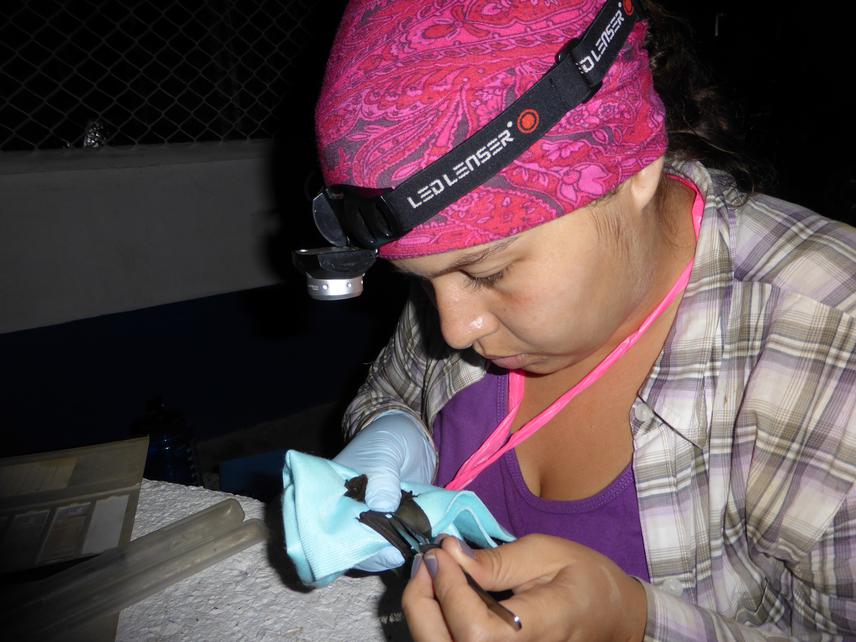Priscilla Alpízar
Other projects
21 Mar 2017
Diet, Gut Microbiome, and Immune System of a Nectar-Feeding Bat in Intensive Banana Plantations in the Caribbean Costa Rican Lowlands
I propose to determine the effects that intensive banana agroecosystems, and the associated agrochemicals have on wildlife, and to explore the relations between habitat alteration, diet, gut microbiota and immune system condition of the animals.

Taking samples from a Glossophaga soricina. © Marco Tschapka.
With this project I would like to answer three questions, which are
(1) Is there variation in the diet of Glossophaga soricina depending on the foraging habitat?
(2) How does the habitat influence the gut microbiome diversity of bats captured in banana plantations and those living in natural forests?
(3) Which of my study areas poses higher challenges to the immune system of the nectar-feeding bats?
For this, I will conduct the field work for this study in the northern Caribbean lowlands of Costa Rica from October 2014 - October 2015, and analyze all my data at the Institute of Experimental Ecology, University of Ulm, Germany from October 2015-2018. I will chose five intensive banana plantations from the Chiquita Banana project and five forest sites from this region in which I will capture bats over one year. From all captured G. soricina individuals, I will collect pollen adhering to the fur in order to obtain data on previously visited nectar plants, and record morphological data, information on teeth condition and ectoparasites, as well samples of feces for the gut microbiome analyses and blood for immune system condition. I will sample at least 100 different individuals for each habitat category, for a total of 200 individuals. In order to avoid resampling captured bats, they will be marked using wing bands. I will additionally collect water samples from all ten study sites for toxicity testing. The samples will be kept refrigerated until the analyses can be performed. To analyze for agrochemicals levels in the water samples, I will use capillary gas chromatography with electron capture and nitrogen-phosphorous detection after liquid-liquid extraction.